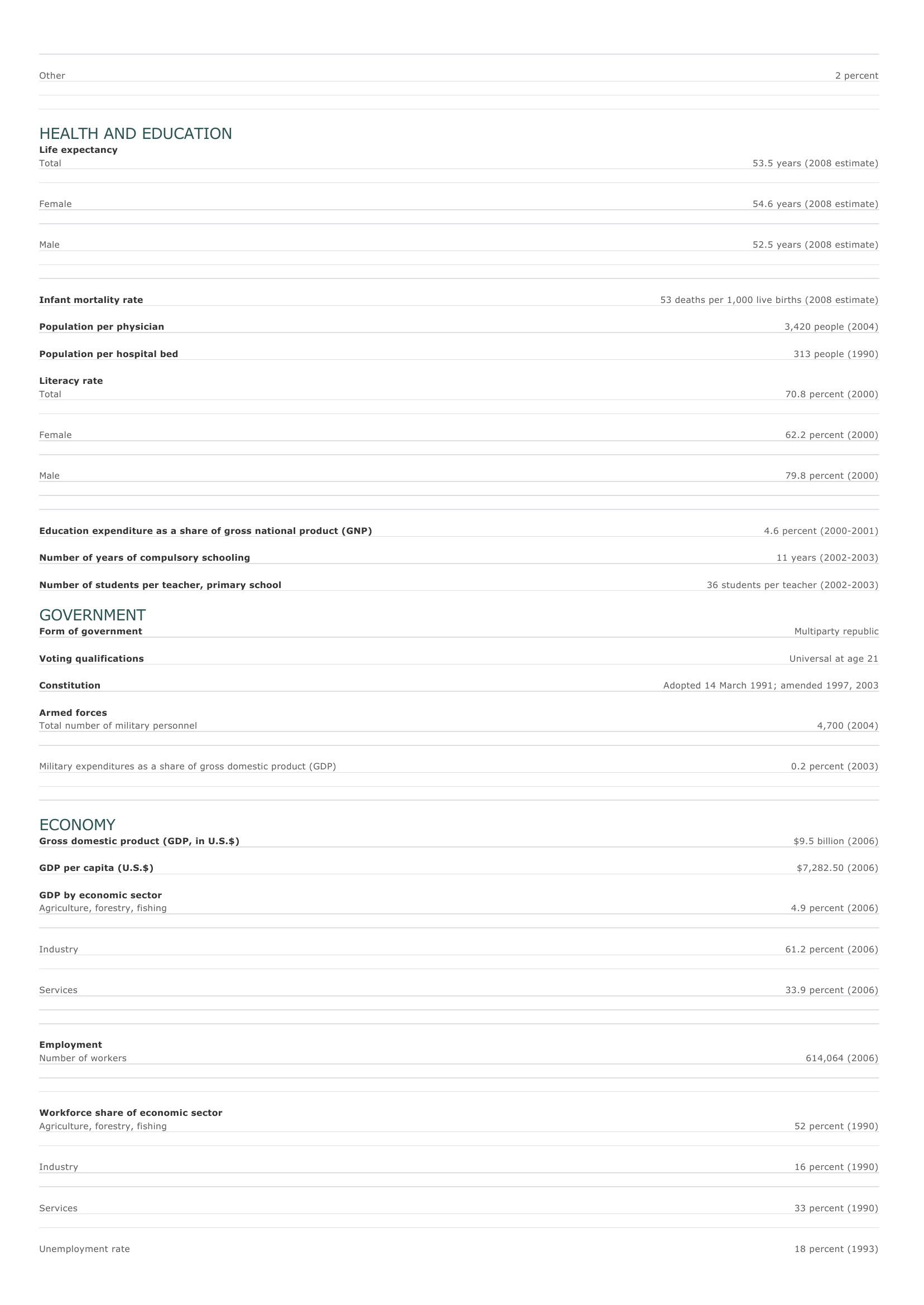
Gabon Facts and Figures. BASIC FACTS Official name Capital Area Gabonese Republic Libreville 267,667 sq km 103,347 sq mi PEOPLE Population 1,484,149 (2008 estimate) Population growth Population growth rate 1.95 percent (2008 estimate) Projected population in 2025 2,059,662 (2025 estimate) Projected population in 2050 3,221,749 (2050 estimate) Population density 5.8 persons per sq km (2008 estimate) 15 persons per sq mi (2008 estimate) Urban/rural distribution Share urban 85 percent (2005 estimate) Share rural 15 percent (2005 estimate) Largest cities, with population Libreville 611,000 (2003 estimate) Port-Gentil 125,000 (1993 estimate) M asuku 75,000 (1988) Ethnic groups Fang 36 percent Mpongwe 15 percent M'Bete 14 percent P unu 12 percent O ther 23 percent Languages French (official), Fang, other indigenous languages Religious affiliations Christian 90 percent Roman Catholic 61 percent Protestant 19 percent Other Christian 10 percent Muslim 5 percent Indigenous beliefs 3 percent O ther 2 percent HEALTH AND EDUCATION Life expectancy Total 53.5 years (2008 estimate) Female 54.6 years (2008 estimate) Male 52.5 years (2008 estimate) Infant mortality rate Population per physician Population per hospital bed 53 deaths per 1,000 live births (2008 estimate) 3,420 people (2004) 313 people (1990) Literacy rate Total 70.8 percent (2000) Female 62.2 percent (2000) Male 79.8 percent (2000) Education expenditure as a share of gross national product (GNP) Number of years of compulsory schooling Number of students per teacher, primary school 4.6 percent (2000-2001) 11 years (2002-2003) 36 students per teacher (2002-2003) GOVERNMENT Form of government Multiparty republic Voting qualifications Universal at age 21 Constitution Armed forces Total number of military personnel Military expenditures as a share of gross domestic product (GDP) Adopted 14 March 1991; amended 1997, 2003 4,700 (2004) 0.2 percent (2003) ECONOMY Gross domestic product (GDP, in U.S.$) GDP per capita (U.S.$) GDP by economic sector Agriculture, forestry, fishing $9.5 billion (2006) $7,282.50 (2006) 4.9 percent (2006) I ndustry 61.2 percent (2006) Services 33.9 percent (2006) Employment Number of workers 614,064 (2006) Workforce share of economic sector Agriculture, forestry, fishing 52 percent (1990) I ndustry 16 percent (1990) Services 33 percent (1990) Unemployment rate 18 percent (1993) National budget (U.S.$) Total revenue $1,300 million (1993 estimate) Total expenditure $1,600 million (1993 estimate) Monetary unit 1 Communaut* Financière Africaine (CFA) franc, consisting of 100 centimes Major trade partners for exports United States, France, China, South Korea, and Trinidad and Tobago Major trade partners for imports France, United States, United Kingdom, Belgium, and Netherlands ENERGY, COMMUNICATIONS, AND TRANSPORTATION Electricity production Electricity from thermal sources 34.89 percent (2003 estimate) Electricity from hydroelectric sources 64.63 percent (2003 estimate) Electricity from nuclear sources Electricity from geothermal, solar, and wind sources Number of radios per 1,000 people 0 percent (2003 estimate) 0.47 percent (2003 estimate) 489 (1999 estimate) Number of telephones per 1,000 people 28 (2005) Number of televisions per 1,000 people 321 (2000 estimate) Number of Internet hosts per 10,000 people 2.1 (2003) Daily newspaper circulation per 1,000 people 30 (1996) Number of motor vehicles per 1,000 people 36 (1997) Paved road as a share of total roads 10 percent (2004) SOURCES Basic Facts and People sections Area data are from the statistical bureaus of individual countries. Population, population growth rate, and population projections are from the United States Census Bureau, International Programs Center, International Data Base (IDB) (www.census.gov). Urban and rural population data are from the Food and Agriculture Organization (FAO) of the United Nations (UN), FAOSTAT database (www.fao.org). Largest cities population data and political divisions data are from the statistical bureaus of individual countries. Ethnic divisions and religion data are largely from the latest Central Intelligence Agency (CIA) World Factbook and from various country censuses and reports. Language data are largely from the Ethnologue, Languages of the World, Summer Institute of Linguistics International (www.sil.org). Health and Education section Life expectancy and infant mortality data are from the United States Census Bureau, International Programs Center, International database (IDB) (www.census.gov). Population per physician and population per hospital bed data are from the World Health Organization (WHO) (www.who.int). Education data are from the United Nations Educational, Scientific and Cultural Organization (UNESCO) database (www.unesco.org). Government section Government, independence, legislature, constitution, highest court, and voting qualifications data are largely from various government Web sites, the latest Europa World Yearbook, and the latest Central Intelligence Agency (CIA) World Factbook. The armed forces data is from Military Balance. Economy section Gross domestic product (GDP), GDP per capita, GDP by economic sectors, employment, and national budget data are from the World Bank database (www.worldbank.org). Monetary unit, agriculture, mining, manufacturing, exports, imports, and major trade partner information is from the statistical bureaus of individual countries, latest Europa World Yearbook, and various United Nations and International Monetary Fund (IMF) publications. Energy, Communication, and Transportation section Electricity information is from the Energy Information Administration (EIA) database (www.eia.doe.gov). Radio, telephone, television, and newspaper information is from the United Nations Educational, Scientific and Cultural Organization (UNESCO) database (www.unesco.org). Internet hosts, motor vehicles, and road data are from the World Bank database (www.worldbank.org). Note Figures may not total 100 percent due to rounding. Microsoft ® Encarta ® 2009. © 1993-2008 Microsoft Corporation. All rights reserved.











